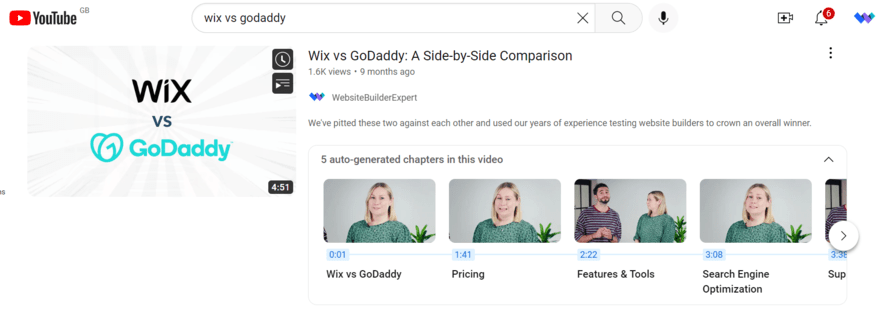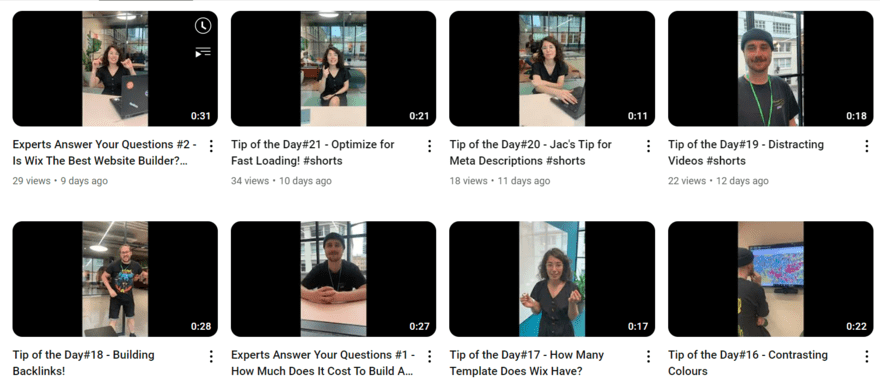How Does the YouTube Algorithm Work in 2023
Our independent research projects and impartial reviews are funded in part by affiliate commissions, at no extra cost to our readers. Learn more
YouTube has over 2 billion monthly active users. Yes, you read that correctly – 2 billion! To put that in context, nearly a quarter of the world’s population are regularly visiting YouTube.
Wonder what they’re watching? You can take a look at the top five global searches for that, which most recently were: “2bts”, “pewdiepie”, “asmr”, “billie eilish” and “baby shark.” This gives a snapshot into the varied reasons why audiences come to YouTube: to relax, watch music, entertain their children, learn new things, and much more.
The huge, varied and diverse audiences that YouTube serves makes it a brilliant tool for businesses both large and small. In this article, we’ll examine and explain the mysterious world of the YouTube algorithm. How does the YouTube algorithm work, what is it, and how can your business benefit from understanding it?
Why Use YouTube?
YouTube is a video sharing and social platform that launched in 2005. It’s the second most popular platform in the world, topped only by Facebook. From a business perspective, you can use YouTube for multiple reasons including reaching new customers, growing your community, improving brand awareness and perceptions, driving engagement, and generating leads.
What Is the YouTube Algorithm?
To be successful on YouTube you first need to get your head around the algorithm. But what is the YouTube algorithm? Put simply, the YouTube algorithm is the way in which videos are matched to viewers.
It takes a whole range of factors such as video name, contents, descriptions, engagement, comments, viewing figures, watchtime, and more – all combined to help rate and rank the order in which videos appear in search results.
YouTube’s overarching mission is to deliver the most relevant and engaging video to the right user, every time they search. This is the cornerstone of YouTube’s success, and the reason why so much effort goes into making the algorithm as sophisticated as it can be.
Benefits of Understanding the YouTube Algorithm
Sounds technical… but what are the real benefits of understanding the algorithm? The primary reason is to build a strong community and help new customers discover your products or services. In fact, 90% of people say they discover new brands or products on YouTube.
However, you cannot hope to achieve these goals without properly understanding the YouTube algorithm. Many brands and entrepreneurs pour time and resources into creating content for YouTube, only to find their videos receive minimal views.
No matter how interesting or well-produced your videos are, viewers are highly unlikely to view them if they can’t easily find them.
Create content with the YouTube algorithm in mind, and you’ll enjoy the following benefits:
- Get more views
- Reach the right people
- Avoid making common video marketing mistakes
- Save time on areas that don’t make a difference
- Be more likely to appear on the first page of search results (especially if your video is longer than average, and created in HD)
Does YouTube’s Algorithm Change?
YouTube executives and engineers are intentionally elusive when it comes to the algorithm. There is little concrete fact or evidence written about it, and to make it even more mysterious, it is constantly changing.
YouTube was first created in 2005, originally set up as a result of major world events which were difficult to find footage of, including the infamous wardrobe malfunction of Janet Jackson at the 2004 Super Bowl.
At this time, the algorithm favored popularity and clicks, with the most successful videos being those with the most views. This led to a huge amount of “clickbait,” with videos being given intriguing or grabby titles to help attract viewers.

The early algorithm favored quantity over quality, but in 2012 this was adapted to focus on the duration of videos, and the time spent watching them, as opposed to total clicks. The rationale was that the true measure of video quality was how long users actually watched them. Makes sense, right? Well, yes and no. Eventually some YouTube creators figured out a way to cheat this algorithm too, such as by using bots to boost viewer figures, or in the case of gamers, creating long, rambling videos.
Around 2016 the algorithm changed again, moving to a model that utilized machine learning. Engineers from YouTube released a paper called Deep Neural Networks for YouTube Recommendations, which went some way to explaining how it would work.
In simple terms, it marked a shift away from ranking videos based on the videos themselves, and to a more sophisticated system that focused on the viewer. It used the viewing history and activity of a user, and assigned a score to each video to determine where it would appear in rankings.
How Does the YouTube Algorithm Work?
With us so far? Great! Let’s get into how the YouTube algorithm actually works. As mentioned previously, the exact YouTube algorithm is a closely guarded secret. The success of the platform is almost entirely a result of this, and to reveal how it works would leave it vulnerable to competitors and manipulation.
However, there are some factors that are known or widely accepted to impact the algorithm. Here’s what they are, and how you can use them to your advantage:
#1. Closely Match Metadata With Search Terms
Metadata is your video’s title, tags, and description. Make sure it accurately reflects the contents of your video and what your users are searching for. Plus, remember you can update metadata even once your assets are uploaded.

#2. Past Video Performance
The format, tagging, naming, engagement, and performance of your past videos will all contribute to the success of new content. Consistency is key, and if something works particularly well for you don’t be afraid to try the same technique again. Plus, if a video performs poorly, you can always delete it!
#3. Type of Content
Content such as behind the scenes videos, explainers, tutorials, and meet the team videos work particularly well for brands and entrepreneurs hoping to build up their YouTube channel. This is something to keep in mind when creating a video marketing strategy. Don’t try to be too professional or glossy, remember – content is more important than production.

#4. How Quickly the Video Gains Popularity
In the first 24 hours, YouTube gives new content an artificial “boost” to see how viewers respond to it. Following that, the first 48 to 72 hours are the most crucial, and a successful video will receive the lion’s share of views in this time. This isn’t a hard and fast rule, however. Remember that many videos can have a longtail, with some videos reaching popularity months or years after they’re uploaded.
#5. Video Length
The average YouTube video is around 11 minutes long, and in general it’s accepted that videos between seven to 15 minutes perform best. There are exceptions to this rule, with many creators finding success with long-form videos of up to an hour.
#6. Channel Video Posting Frequency
This is a hotly debated topic online. Depending on who you speak to, some channel owners attribute their success to daily posting, others weekly. Some of the most successful YouTubers post even less frequently than this, perhaps once per month. Don’t be afraid to experiment, or gradually scale up your posting frequency.
#7. Viewer Feedback
This is done by gradually surveying users as they watch content, plus factors such as likes, dislikes, shares, and comments. A common technique is to ask your viewers to “like and subscribe” at the end of your videos.
#8. Demographics
This is a simple one. Users with similar demographics to each other such as age, location, and gender, are more likely to be shown similar videos. As a business owner, you should keep your target audience in mind, creating content and using tags and keywords that they’re likely to search for.
Find out more
If you’re keen to learn more about marketing your business online, check out our shortlist of the Best Online Marketing Courses to give your site a boost!
Summary
Thank you for reading! We hope this article has helped to shed light on the mysterious workings of YouTube, and answered your question “how does the YouTube algorithm work?” By following our advice it is totally achievable to understand how the algorithm works, and use this to your advantage to help boost your videos and grow your channel. And remember, the algorithm changes frequently, so keep checking back for the latest tips and tricks. Now that you understand how the YouTube algorithm works, why not read our guide on how to get more subscribers?
Leave a comment